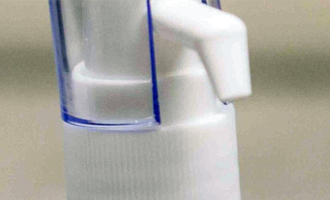Christmas Trees & Allergies is a common problem for many. Board Certified Allergist, Allen K Lieberman, MD, of Austin Family Allergy and Asthma, based in Austin, Texas was interviewed recently on KVUE-TV on the topic. Below is an overview of that interview. The link to view Dr. Lieberman’s KVUE-TV interview is located at the bottom of this post.
A Q and A with Board Certified Allergist, Allen K. Lieberman, MD.
Q: The holidays can be a rough time of year for folks with allergies, is that right?
Dr. Lieberman: Yes, this is a tough time of year. Many people are ill with colds and viruses. Plus, you have the start of cedar in the air, which leads to even more allergy problems. The last thing a person wants to do is make allergies worse by selecting the wrong Christmas tree. Fortunately it’s usually not the tree itself people are allergic to, but rather what is on the tree.
Q: How should people go about choosing the correct tree that is right for them?
Dr. Lieberman: A lot depends on what you are allergic to. If your allergic mostly to molds than a fresh cut, live tree can present problems. Or, if you are allergic to dust, then an artificial tree may exacerbate allergies. If you are allergic to both, then it is a “pick your poison” decision to make. There are steps one can take if prone to these types of allergies. For example, with dust allergies, you can make sure the tree is properly stored and cleaned prior to setting it up in your home. For a live tree, make sure it is properly washed and dried before it is set up inside your home.
Q: What steps do you recommend for those with allergies to consider?
Dr. Lieberman: Several studies have shown that the longer a live tree is in the home, the higher the mold counts. Mold count increases by five-fold after a tree was set up in the home more than a week. One recommendation is not to have the tree indoors for more than a week which may not be realistic. Removing the tree a day or two after Christmas can also be a big help. Using HEPA Air filters in the home can also help keep the air more free from molds, dust and other allergens associated with either artificial or live Christmas trees.
Q: Do you have any other suggestions when it comes to Christmas Trees and Allergies?
Dr. Lieberman: People who suffer from allergies can still enjoy the holidays with some careful planning. Choose the correct tree that will cause the least havoc with your allergies. And, it is extra important for allergy sufferers to stay on their allergy medicines during the holiday season. This includes antihistamines, nasal sprays and asthma inhalers. Once the tree has been removed, we will soon be moving into cedar season, so it’s best to be prepared and keep your prescriptions up to date and on hand.
CLICK HERE TO VIEW Dr. Lieberman’s interview on KVUE-TV on Christmas Trees and Allergies.
Austin Family Allergy and Asthma addresses each patient from a whole person perspective. Same and next day appointments with a board certified allergy physician are typically available. Click here to learn more.




